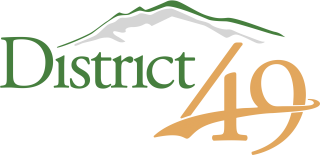District 49 in Colorado is one of the fastest-growing K-12 districts in the state, serving 25,000 students. Like many other school districts across the United States, District 49 realized that a dramatic increase in the number of edtech tools being used across the district accompanied the sudden onset of virtual learning in early 2020, and knew it was unsustainable.
“Since building principals have the autonomy to purchase for their needs, there was little consistency across our district,” said Melissa Riggs, Education Technology Specialist - Instruction. “Parents who were thrust into the role of co-teacher were frustrated by logins and setups for so many sites and apps.”
The district looked for a partner that could support its goal of getting a handle on the massive number of edtech tools in use, as well as help create consistency among how those products are requested, vetted and approved. In selecting LearnPlatform, District 49 is able to support processes across schools while ensuring compliance with Colorado’s student data privacy regulations.
What the District’s Request Process Looked Like Before
Like many districts, District 49’s edtech request flow was a manual, time-consuming set of processes. Teachers conducted individual research and submitted requests through a Google Form that was linked from the district’s website. The requested tool then entered the vetting process – each stage handled by a different member of the district’s team, with much manual back and forth. Once a decision was made, a designated team member would, from a separate system, email the teacher who requested the product with information about the decision. The team member would then update the district’s edtech approved software page, also in a separate system.
The district wanted to change this cumbersome process and provide more transparency to teachers about the status of a given product throughout the vetting stage.
What the Request Process Looks Like Now
The district started by creating a district-specific edtech library of its approved edtech tools. The library provides a single, centralized source of truth that keeps all stakeholders, including teachers, students and families, informed of approved tools and associated privacy statuses.
By first organizing tools this way, the district was poised to create their request process from a solid foundation of shared edtech knowledge.
We are excited to partner with LearnPlatform to get a handle on this number [oftools] and the amount of data available to help principals make decisions based on hard data.
Melissa Riggs, Education Technology Specialist - Instruction
The district’s new edtech products are requested through a consolidated process that:
Ensures products meet student data privacy requirements at both the state and federal level.
Empowers educators with a single process for making a request that keeps them up to date on current request status. Educators can first check their organization’s product library for the tool they’re interested in.
Allows administrators to initiate requests to providers to complete applications and DPAs, and centralizes record keeping.
Riggs and the team are able to simplify the process for both teachers and administrators, promoting a process that is both consistent across school sites and flexible enough to configure to specific needs.
“Staff appreciate a ‘one-stop’ approach – being able to search for a product, see its approval status and submit a request – all from LearnPlatform,” Riggs said.
Next Steps
The next step for the district is to build on this efficient edtech ecosystem and start bringing more evidence on edtech effectiveness into its decision making. The district plans to start evaluating product usage and cost to see how those factors correlate with D49 student achievement by running rapid-cycle evaluations.
“We are excited to partner with LearnPlatform to get a handle on this number [of tools] and the amount of data available to help principals make decisions based on hard data,” Riggs said.
Download Case Study
